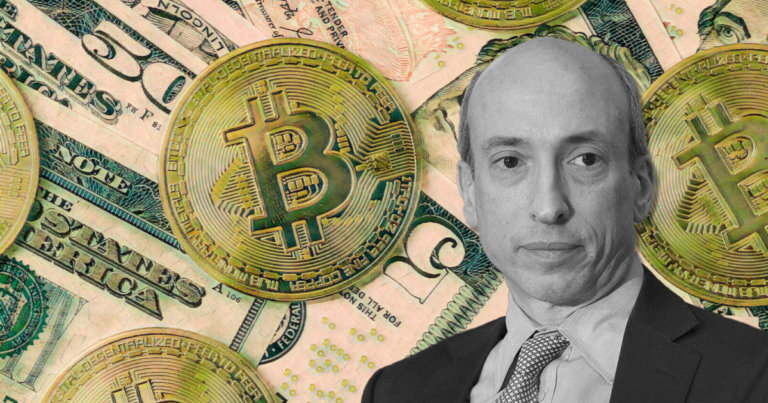 SEC head Gary Gensler warns of ‘even more’ crypto regulation
SEC head Gary Gensler warns of ‘even more’ crypto regulation SEC head Gary Gensler warns of ‘even more’ crypto regulation
In his letter to Senator Warren, the Chairman stated the US SEC needs additional authorization and resources to regulate cryptocurrency exchanges.

Cover art/illustration via CryptoSlate. Image includes combined content which may include AI-generated content.
Senator Elizabeth Warren recently released the letter Securities and Exchange Commission (SEC) Chair Gary Gensler sent in response to her request to address the “opaque and volatile” crypto market and resolve whether the Congress should intervene.
Determined to rein in crypto, Senator Warren wrote to the SEC Chairman last month inquiring concrete input on what authorization the agency needs to regulate cryptocurrency exchanges. Here is what he responded.
Putting spotlight on crypto trading, lending, and DeFi platforms
“I believe we need additional authorities to prevent transactions, products, and platforms from falling between regulatory cracks,” wrote Gensler, adding that “the legislative priority should center on crypto trading, lending, and DeFi platforms.”
“While each token’s legal status depends on its own facts and circumstances, the probability is quite remote that, with 50 or 100 tokens, any given platform has zero securities,” read Gensler’s response, while he affirmed that the question of securities status is clear.
“Certain rules related to crypto assets are well-settled. The test to determine whether a crypto asset is a security is clear,” asserted Gensler, while pointing out the regulator will “need more resources to protect investors in this growing and volatile sector.”
”Further, while many overseas platforms state they don’t allow U.S. investors, there are
allegations that some unregulated foreign exchanges facilitate trading by U.S. traders who are
using virtual private networks, or VPNs,” wrote Gensler, while touching the issue of US crypto traders evading overseas exchange bans.
Another issue has to do with stablecoins
Gensler also took the opportunity to draw the Senator’s attention to the booming stablecoin
market worth $113 billion, pointing out their cardinal role in crypto trading and lending.
“To trade crypto-to-crypto, usually, somebody uses stablecoins,” Gensler explained, while further elaborating that “in July, nearly three-quarters of trading on all crypto trading platforms occurred between a stablecoin and some other token.”
According to the regulator, the use of stablecoins “may facilitate those seeking to sidestep a host of public policy goals connected to the traditional banking and financial system: anti-money laundering, tax compliance, sanctions, and the like.”


























































































